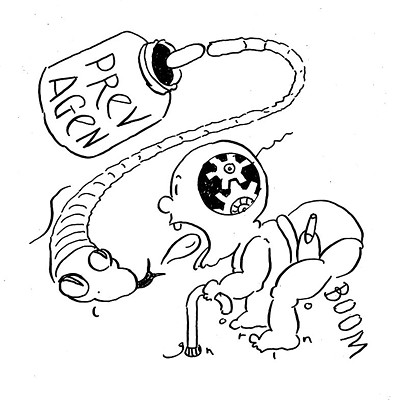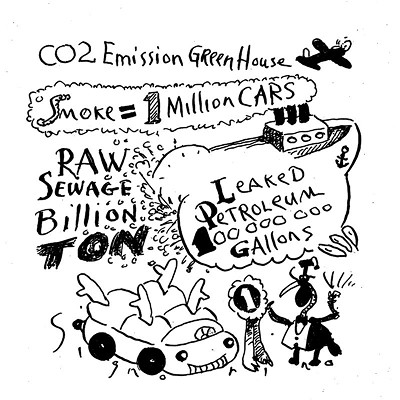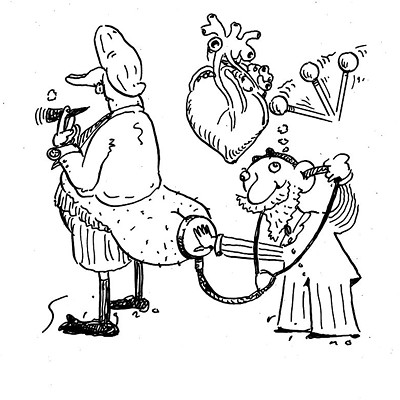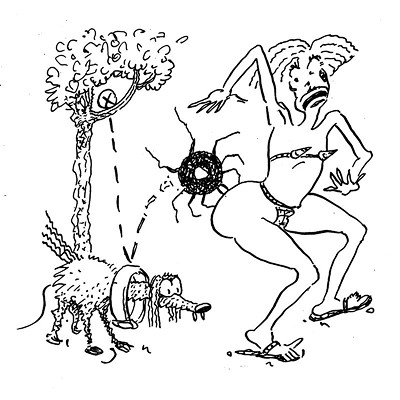Which scenario uses less energy in home heating, and thus saves more money: (a) before going to bed, turning the thermostat down from 68 degrees Fahrenheit to 60, then turning it up again in the morning, or (b) leaving it at 68 all night? I always believed (a) would use less energy, but people tell me that (b) uses less, because reheating the house to 68 in the morning uses more energy than keeping it at that temperature all night. -Bill Morrison, British Columbia
Lowering your thermostat during times when you need heat less (e.g., when you're asleep or out of the house) is called thermostat setback; the equivalent practice in summertime is thermostat setup. In theory, thermostat setback and setup will almost always save energy, based on the following simple principle of heat transfer: the rate of heat loss (or gain) is primarily a function of the difference in temperature between two objects, such as your house and the surrounding air. In the winter, the colder your house is allowed to get, the slower it loses heat. Although your heater may run for a while during the recovery period when it's bringing the house back up to temperature, you still use less energy than you would keeping the house at a constant temperature around the clock.
A lot of people don't get this-in fact they're baffled by the entire subject of thermostats. One researcher estimated in 1986 that as much as half the populace subscribes to what he called "valve theory," namely the belief that the thermostat functions like a gas pedal: the higher you set it, the hotter your furnace runs. In reality, most furnaces pump out heat at the same rate regardless of the setting; they just cycle on and off as needed to keep the house at whatever temp the thermostat dictates.
Failing to grasp the subtleties of home heating can be expensive. At one time the U.S. Department of Energy was urging Americans to install programmable thermostats, which can be set to automatically turn the heat down when it's not needed. These devices were thought to generate savings of 10 to 30 percent, and close to half of U.S. homes now have them. In 2006, though, the DOE stopped pushing the thermostats, which aren't cheap, after multiple studies showed the actual savings was zero-not because the inventors hadn't understood the laws of physics, but because consumers didn't use the things right. They couldn't figure out how to program the thermostats, didn't believe they'd work and so didn't bother, set the temperature higher during the day and thereby canceled out the savings from the setback at night, and so on.
Used correctly, however, programmable thermostats indisputably work, and so does setting back the thermostat manually, provided you do it systematically. My indefatigable assistant Una conducted a long-term research project in which she installed a programmable thermostat in her house, aggressively dialed back the nighttime setting for winter, then tracked her energy use for three years, using data from the National Oceanic and Atmospheric Administration to correct for outdoor temperature differences before and after installation. Result: she saved about 28 percent on her winter gas bill, enough to recover the thermostat's $120 cost in three months.
Granted, Una's situation was unusual:
• Her preferred wintertime thermostat setting had been a toasty 76.
• She set the overnight temperature on the new thermostat down to 50.
• Her house is older, with poor insulation, and may fairly be described as an energy sieve. (Since a well-insulated house loses less heat to start with, any savings due to setting back the thermostat are likely to be modest.)
What kind of savings are more typical? One rule of thumb is that each degree Fahrenheit you set the thermostat back over an eight-hour period translates to a 1 percent savings in heating costs. A study of two identical Canadian test houses showed an 11-degree setback overnight and during work hours generated a 13 percent savings in gas and a 2 percent savings in electricity (the furnace blower ran less). My guess is that's better than most people will get. A U.S. study of 2,658 gas-heated homes using programmable thermostats found a 6 percent reduction in energy use. cs
























